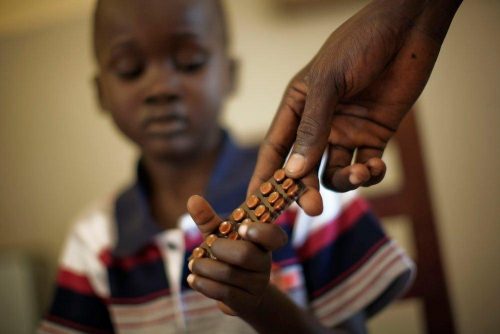A new blood test to detect tuberculosis could save the lives of millions of people

By Jessica Wepner, The article is published with the approval of Scientific American Israel and the Ort Israel network, 26.06.2016
No less than a third of the world's population is infected with the bacterium that causes tuberculosis, a disease that mostly concentrates in the lungs and is characterized by weakness, fever, cough and chest pains. In 2014 (the year for which the most recent data is available) about 9.6 million people contracted the disease. That year, about 1.5 million people died from tuberculosis. The ability to diagnose tuberculosis easily, at low cost, and with high accuracy is of paramount importance, but the most common diagnostic method today fails, at least to some extent, in all three respects. A new method, based on a blood test, can make an important contribution to curbing the plague.
In the usual test to detect tuberculosis, bacterial DNA is looked for in the sputum emitted by a cough. But there are children who fail to produce such sputum when asked for a sample. The test may also miss tuberculosis in people who are also HIV carriers because in such a situation, the number of bacteria that the test looks for can be too small to allow them to be located outside the lungs. Also, the test costs $10, a price that may be beyond the reach of many in developing countries. Under these conditions, many of the TB cases are only diagnosed at a late stage or not diagnosed at all, and as a result, severe cases are not treated and it is easier for the disease to continue spreading.
Two years ago, the World Health Organization called for the development of improved diagnostic methods. Purvesh Khatri, professor of medicine at Stanford University, responded to the call. Together with his colleagues, he scanned the human genome and found three genes that make it possible to distinguish between active tuberculosis and other diseases. Following the discovery, the team developed a way to locate these genes in the blood.
According to the research of the team of researchers, Which was published In the Lancet respiratory medicine journal, there is no difference in the sensitivity of the new test between subjects with or without HIV and its success rate in children is 86%. Another advantage of the blood test is that, unlike sputum tests, it can be performed in a clinic (and not in a remote laboratory) and receive the results the same day. This advantage is especially important in developing countries, where getting to a clinic for even one test can be a heavy burden. "The goal is to be able to start treatment immediately," she says Sheila Shinoy, a professor of medicine at Yale University whose research focuses on AIDS.
The technology has not yet been used to diagnose new patients and may be difficult to implement on a large scale, but in the meantime, Khatri has already begun the process of patenting the test. He believes the cost could be less than half the cost of the current test. "If it is possible to use the signature of these three genes to develop a test that will be used by doctors in clinics, it could revolutionize the diagnosis of tuberculosis," says Shinoy.
